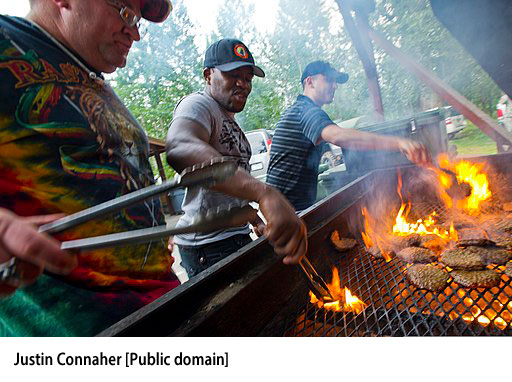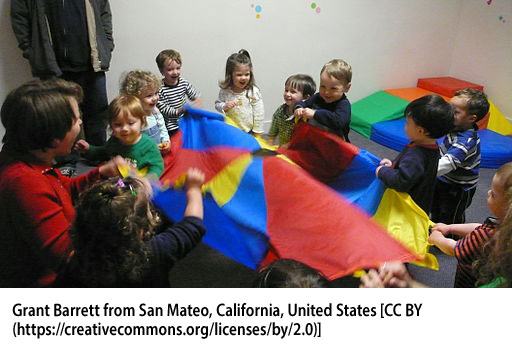Creative Thinking Tools II
Creative thinking is sometimes called "divergent thinking" because it wanders off the straight path to explore a multitude of possibilities. Instead of seeking the answer at the back of the book, creativity seeks every other possibility. It recognizes that there often is not a single right answer. Creativity is unapologetically messy, but it arrives at amazing destinations that critical thinking can't reach on its own.
The following strategies can help spur creative thinking about any topic.
Manipulative Verbs
Any action verb can issue commands: "Jump! Run! Stop!" Command verbs don't have to apply just to people: They can work on any topic. A manipulative verb is a command that you apply to a topic in order to think creatively about it.
accelerate
accessorize
adjust
amplify
automate
bend
bind
brand
break
build
burst
dream
decelerate
deflate
divide
draw
drive
elevate
eliminate
feed
fight
forgive
freeze
grow
hide
inflate
lead
melt
multiply
prove
raise
rearrange
reverse
rework
shake
show
shrink
simplify
stretch
strike
swing
tear
throw
twist
wear
weave
wring
yeet
Imagine that your topic is the annual company picnic, which you must organize this year. Select a manipulative verb and apply it to your topic. Then think of many positive ways to obey the command:
Accelerate the annual company picnic.

Move it from July, which tends to be too hot, to June for more pleasant weather.
Start the picnic at 11:00 a.m. instead of 1:00 p.m. so that people will have more time afterward.
Schedule active games for employees' kids, like sack races, egg toss, and hula-hoop competition.
Excite adults by handing out bonuses at the picnic.
Hire a band to provide music.
Reserve a pavilion in town so people don't have to drive so far.
Change the picnic to a lake cruise for the staff.
The command "Accelerate the annual company picnic" prompted many creative suggestions. A different command, such as "Elevate the annual company picnic" would have a completely different set of suggestions.
Using Manipulative Verbs (Google Doc)
Download the Google doc and follow the instructions. Or select one of the manipulative verbs from the table above. Then write a command starting with the manipulative verb and ending with your topic. Afterward, list many positive ways to follow the command. (Note that negative verbs like "burst" provide an extra challenge when applied to positive topics like "company picnic," and positive verbs like "amplify" do the same for negative topics like "property taxes." Still, creative thinking loves such a challenge.) Consider the ideas you've devised and see if any are worth pursuing.
Counterfactual Thinking
In an argument, if only thinking is a logical fallacy—using something that didn't occur as support for a conclusion. In creative terms, however, "what if" questions can open up all sorts of possibilities. In fact, Einstein's famous thought experiments ("What if I were in an elevator in freefall?" or "What would it be like to ride on a photon?") transformed physics forever.
To use counterfactual thinking, ask a "What if" or "What would" question about your topic. Then try to think of it from this totally imaginative perspective.
What if the company offered free childcare for 2–4 year-olds of full-time employees?

We'd attract many younger workers, especially those with children.
Even older workers might want to take advantage of the service for grandchildren.
Workers could see their children at breaks and eat lunch with them.
Family friendships could develop among coworkers and their children.
We'd need to hire a licensed daycare staff.
We'd need to provide a safe onsite location and outdoor play area.
We'd need to extend the company insurance policy and have parents sign waivers.
As you can see, simply by asking the counterfactual question "What if" spurs creative thinking about the situation, beginning to explore possibilities and limitations.
Using Counterfactual Thinking
Name a topic that you want to think creatively about. Then write a question starting with "What if" or "What would" and addressing something about your topic that isn't the case (but could be). Afterward, answer your question in as many ways as you can.
Provocative Questions
Provocative questions push you beyond counterfactual thinking by intentionally attacking assumptions. You'll name a particular topic and list your assumptions about it. Then you'll write a provocative question that challenges each assumption.
Topic: Cell phones
Assumptions |
Provocative Questions |
| Cell phones should be designed to match the needs of most users. | How can we design a cell phone for people who don't want one? |
| Cell phones should fit comfortably in a pocket and be easy to hold. | What if you didn't hold your cell phone? What if you wore it as a pair of glasses? |
| People want all kinds of apps and functions on their cell phones. | How would a text-only cell phone work? |
| People want their own cell phones. | How could we rent cell phones by the day? |
| Teachers think cell phones are a distraction in class. | How could we design lessons that would use students' cell phones? |
Creating Provocative Questions (Google Doc)
Download the Google doc and fill it in. Name your topic and write assumptions in the left column. In the right column, write provocative questions that challenge the assumptions. Then choose one question to explore.
Reverse Thinking
Reverse thinking turns a situation on its head. Imagine that the effects are the causes, the problem is the solution, the opposite position is true, and so on. Stating the opposite of conventional thinking requires you to break through barriers of thought to discover new ideas, such as, "The meek shall inherit the earth."
Topic: The role of experts
Conventional Wisdom |
Reverse Thinking |
| A group should learn about a topic from the most knowledgeable person. | The person who is most knowledgeable about a topic should learn from the group. |
| Wikipedia demonstrates why people should trust experts instead of consensus thinking. | Wikipedia demonstrates why people should trust consensus thinking instead of experts. |
| The world needs more brilliant specialists to advance their fields. | The world needs more brilliant generalists to connect multiple fields. |
| The best scientists think critically. | The best scientists think creatively. |
Using Reverse Thinking (Google Doc)
Download the Google doc and fill it in. Name your topic and write conventional wisdom in the left column. In the right column, write a statement that completely reverses the thinking. Then choose one statement to explore.